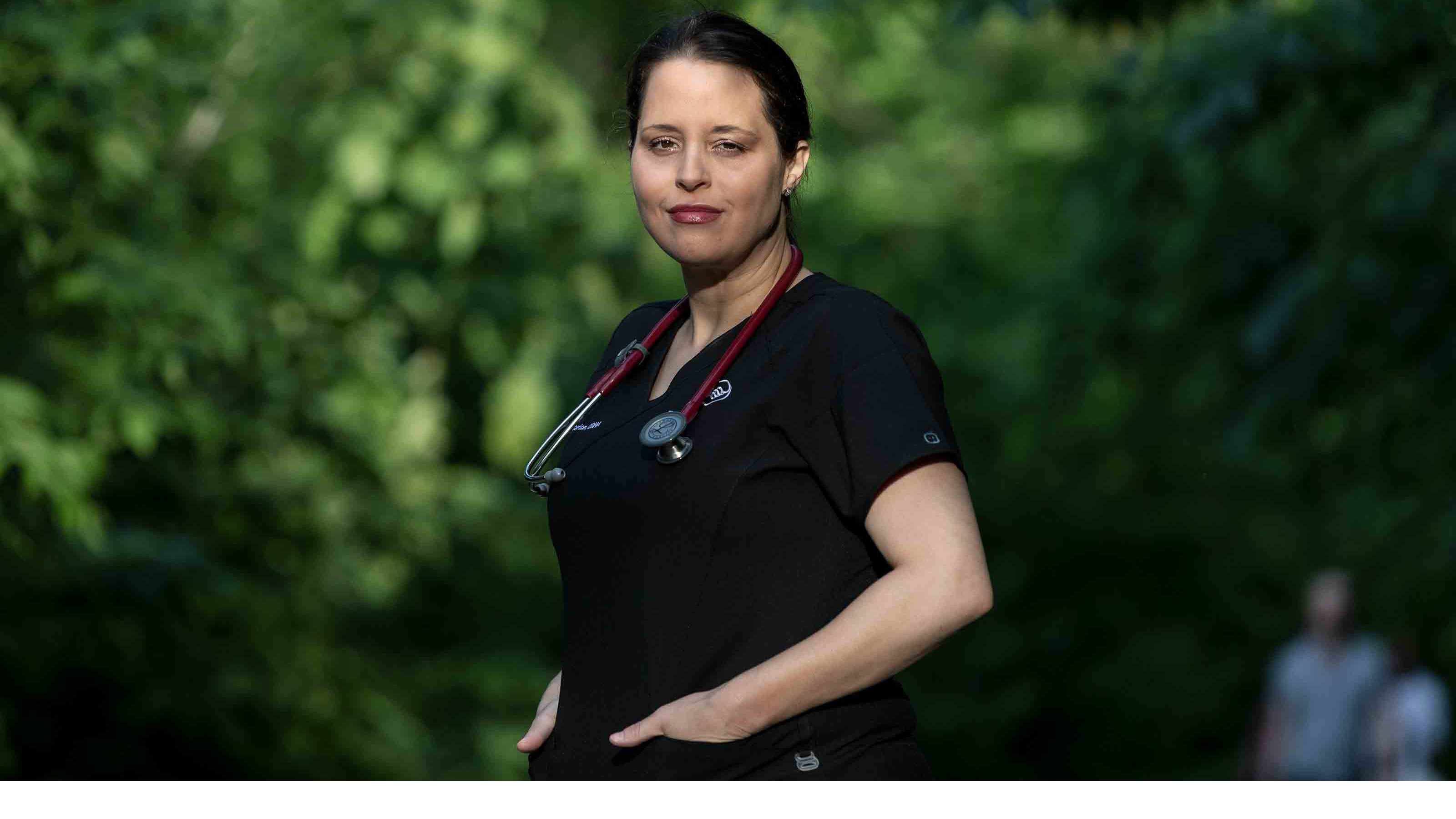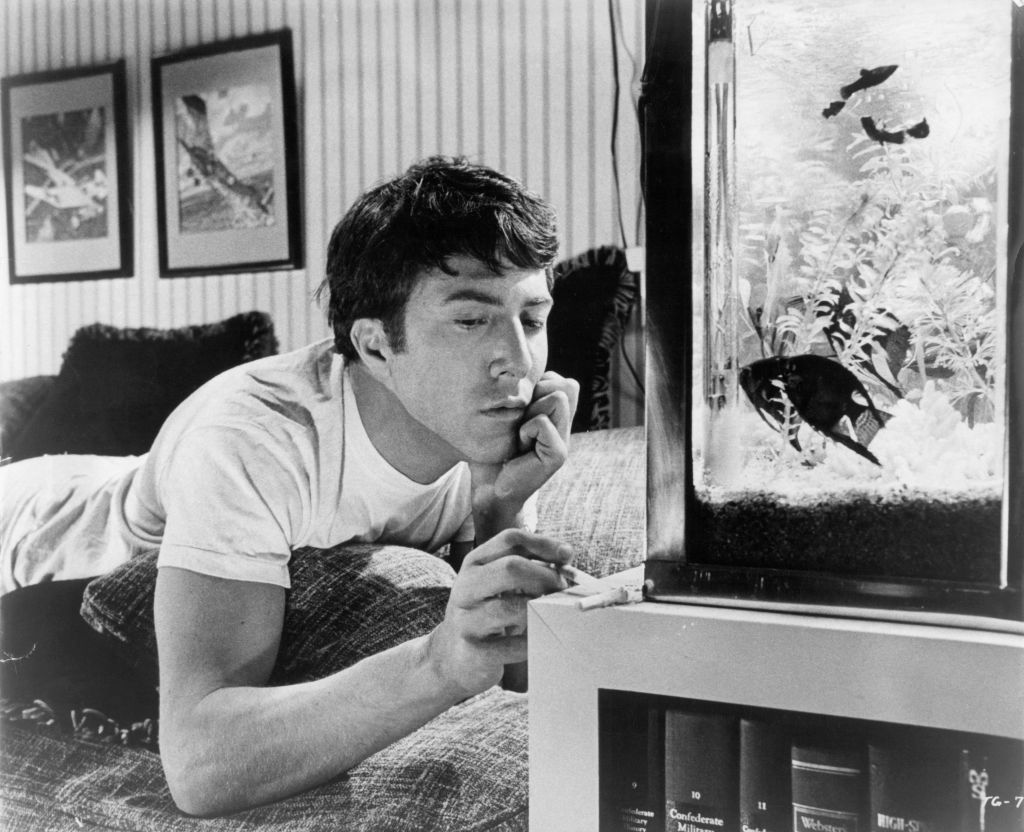Nursing in the Time of COVID
This health care professional warns that the pandemic will worsen the nursing shortage.


Leah Gordon, 43, lives in Hugo, Minn., and directs the nurse anesthetist program at St. Mary's University of Minnesota. Kiplinger's talked to her about the challenges created by COVID 19 for nurse anesthetists and the problem student nurses--and the health care industry—are facing because they can't complete their bedside clinicals.
What does a nurse anesthetist do? When you heard about patients with COVID getting breathing tubes, it was primarily nurse anesthetists manning those intensive care units, placing the lines to give the medications and putting the breathing tubes between the vocal cords into their lungs.
How has the pandemic affected your job? My full-time job is as a professor and the nurse anesthetist program director at St. Mary’s University of Minnesota. I did work one day a week at an outpatient gastroenterology center. In order to be a really good instructor, it’s important to keep my skills fresh.

Sign up for Kiplinger’s Free E-Newsletters
Profit and prosper with the best of expert advice on investing, taxes, retirement, personal finance and more - straight to your e-mail.
Profit and prosper with the best of expert advice - straight to your e-mail.
Your side gig is on hold? When COVID hit, the first thing our governor did was suspend elective surgeries. Plus, they wanted all the personal protective equipment brought to a central location. That meant we couldn’t do any cases because we couldn’t use our gowns, we couldn’t use our shields and we couldn’t use our masks.
You must have taken a financial hit. A nurse anesthetist out of school right now is earning $180,000 to $190,000. I feel like a jerk even talking about it because I’m very, very fortunate, but when you lose that side hustle, all of a sudden $50,000 is gone. I earn too much as a professor to qualify for unemployment. But I have a $1,900-a-month student loan payment, and to not have my side job right now is challenging—and I’m not sure if I’m going to get it back.
What about the rest of your family? My partner is a registered nurse who works for the same surgery center—that’s how we met. He was furloughed for a few months, but now he’s back at work.
Will your students be able to graduate? We’re still figuring it out. Right now, most classes are online, and it’s really hard to learn a medical specialty at your house. You have to be able to do lab work and learn skills with your instructor side by side with you. We don’t really have simulation capability to teach our students how to put in an epidural or a spinal. At a minimum, our students have to complete 2,000 hours of bedside care, and our program is only 2 1/2 years long. We’re talking about whether we’re going to add a semester and try to create some credits for them so they can qualify for student loans.
Do you think COVID will affect the health care system longer term? I’m very concerned about everybody being able to get to the bedside and through their training. If you look at the nursing shortage in the country right now—which is only projected to get bigger—to not have nurses getting their clinicals, we’re going to have some workforce issues.
Get Kiplinger Today newsletter — free
Profit and prosper with the best of Kiplinger's advice on investing, taxes, retirement, personal finance and much more. Delivered daily. Enter your email in the box and click Sign Me Up.

Mark was the editor of Kiplinger's Personal Finance magazine from July 2017 to June 2023. Prior to becoming editor, he was the Money and Living sections editor and, before that, the automotive writer. He has also been editor of Kiplinger.com as well as the magazine's managing editor, assistant managing editor and chief copy editor. Mark has also served as president of the Washington Automotive Press Association. In 1990 he was nominated for a National Magazine Award. Mark earned a B.A. from University of Virginia and an M.A. in Writing from Johns Hopkins University. Mark lives in Washington, D.C., with his wife, and they spend as much time as possible in their Glen Arbor, Mich., vacation home.
-
 Ask the Editor: Questions on Amended Returns and Property
Ask the Editor: Questions on Amended Returns and PropertyAsk the Editor: Taxes, April 18, 2025 — Joy Taylor, The Kiplinger Tax Letter Editor, answers questions on amended returns, property and deductions.
By Joy Taylor
-
 Top Five Tips From Current Retirees to Future Generations
Top Five Tips From Current Retirees to Future Generations"Plastics" is no longer the wisdom passed down to the young, as in "The Graduate." These days, retirees are giving much better advice.
By Christy Bieber
-
 What Does Medicare Not Cover? Eight Things You Should Know
What Does Medicare Not Cover? Eight Things You Should KnowHealthy Living on a Budget Medicare Part A and Part B leave gaps in your healthcare coverage. But Medicare Advantage has problems, too.
By Donna LeValley
-
 Roth IRA Contribution Limits for 2025
Roth IRA Contribution Limits for 2025Roth IRAs Roth IRA contribution limits have gone up. Here's what you need to know.
By Jackie Stewart
-
 Four Tips for Renting Out Your Home on Airbnb
Four Tips for Renting Out Your Home on Airbnbreal estate Here's what you should know before listing your home on Airbnb.
By Miriam Cross
-
 Five Ways to a Cheap Last-Minute Vacation
Five Ways to a Cheap Last-Minute VacationTravel It is possible to pull off a cheap last-minute vacation. Here are some tips to make it happen.
By Vaishali Varu
-
 How to Figure Out How Much Life Insurance You Need
How to Figure Out How Much Life Insurance You Needinsurance Instead of relying on rules of thumb, you’re better off taking a systematic approach to figuring your life insurance needs.
By Kimberly Lankford
-
 Amazon Big Deal Days Is Coming! We’ve Got All the Details
Amazon Big Deal Days Is Coming! We’ve Got All the DetailsAmazon Prime To kick off the holiday season with a bang, Amazon Big Deal Days runs Tuesday, October 8 and Wednesday, October 9.
By Bob Niedt
-
 How to Shop for Life Insurance in 3 Easy Steps
How to Shop for Life Insurance in 3 Easy Stepsinsurance Shopping for life insurance? You may be able to estimate how much you need online, but that's just the start of your search.
By Kaitlin Pitsker
-
 Five Ways to Shop for a Low Mortgage Rate
Five Ways to Shop for a Low Mortgage RateBecoming a Homeowner Mortgage rates are high this year, but you can still find an affordable loan with these tips.
By Daniel Bortz